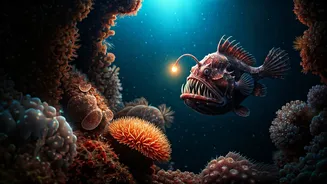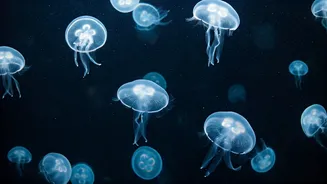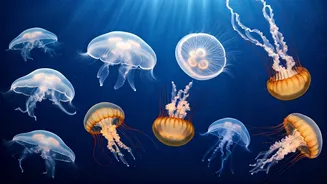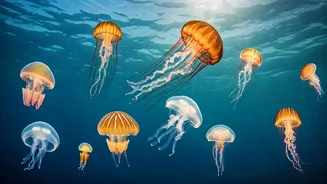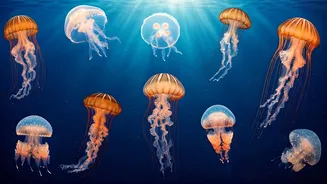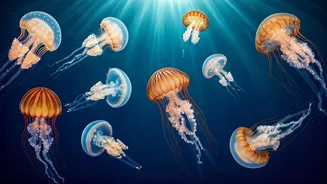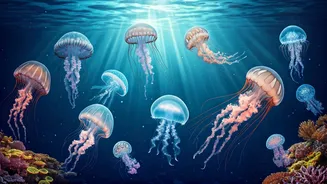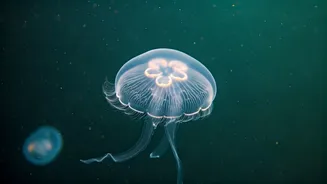Meet the Glowers
Bioluminescence, the production and emission of light by living organisms, is a captivating phenomenon found in many creatures across different environments.
Several organisms showcase this ability, ranging from the depths of the ocean to the land. Jellyfish such as *Aequorea victoria*, and dinoflagellates (glowing plankton) are some of the marine organisms that are known for their glowing ability. On land, creatures such as fireflies, glow-worms, and railroad worms are well-known examples of bioluminescent life. These creatures have evolved unique mechanisms to produce and utilize light for various purposes, including attracting mates, defense, or communication.
Jellyfish and Plankton
Jellyfish are some of the best-known bioluminescent animals, particularly the *Aequorea victoria* species. These jellyfish use light as a defense mechanism or to attract prey. When disturbed, they emit a bright flash of light, startling predators or potentially attracting larger predators that prey on the attacking animal. The light-producing process in jellyfish involves specialized cells that contain a protein called aequorin. When calcium ions bind to aequorin, it triggers a cascade of chemical reactions that generate light. Similarly, glowing plankton, also known as dinoflagellates, are single-celled organisms that exhibit bioluminescence. These plankton are found in marine environments, where they create a dazzling display of light. They also use the light as a defense or attract potential mates.
Land-Based Wonders
Bioluminescence is not exclusive to marine life. Various land-dwelling organisms also exhibit this fascinating trait. Fireflies, also known as lightning bugs, are perhaps the most familiar example. They use light primarily for mating purposes. Male fireflies produce a specific pattern of flashes to attract females. In response, females flash back, signaling their interest. Glow-worms, the larval stage of certain beetle species, are another group of land-based bioluminescent animals. They emit a steady glow from their abdomens to attract prey or potential mates. Similarly, railroad worms, also known as the railroad worm larvae, display bioluminescence along their bodies. This visual display serves as a warning signal to predators.
Other Glowing Creatures
Beyond jellyfish, plankton, and the land-based insects, numerous other animals exhibit bioluminescence. Lanternfish, for instance, are deep-sea fish that have light-producing organs called photophores. These photophores are used for various functions, including communication, camouflage, and attracting prey. Flashlight fish are another unique example of bioluminescence. They possess specialized light organs beneath their eyes, which they use to communicate or illuminate the dark waters. Cookiecutter sharks also utilize bioluminescence, exhibiting glowing patterns on their bellies. This aids in camouflage, confusing prey by mimicking the appearance of smaller fish and allowing the shark to ambush its victims. Anglerfish, deep-sea predators, are well-known for their bioluminescent lures. These lures attract prey in the dark, allowing them to capture their meals in the lightless ocean depths.
